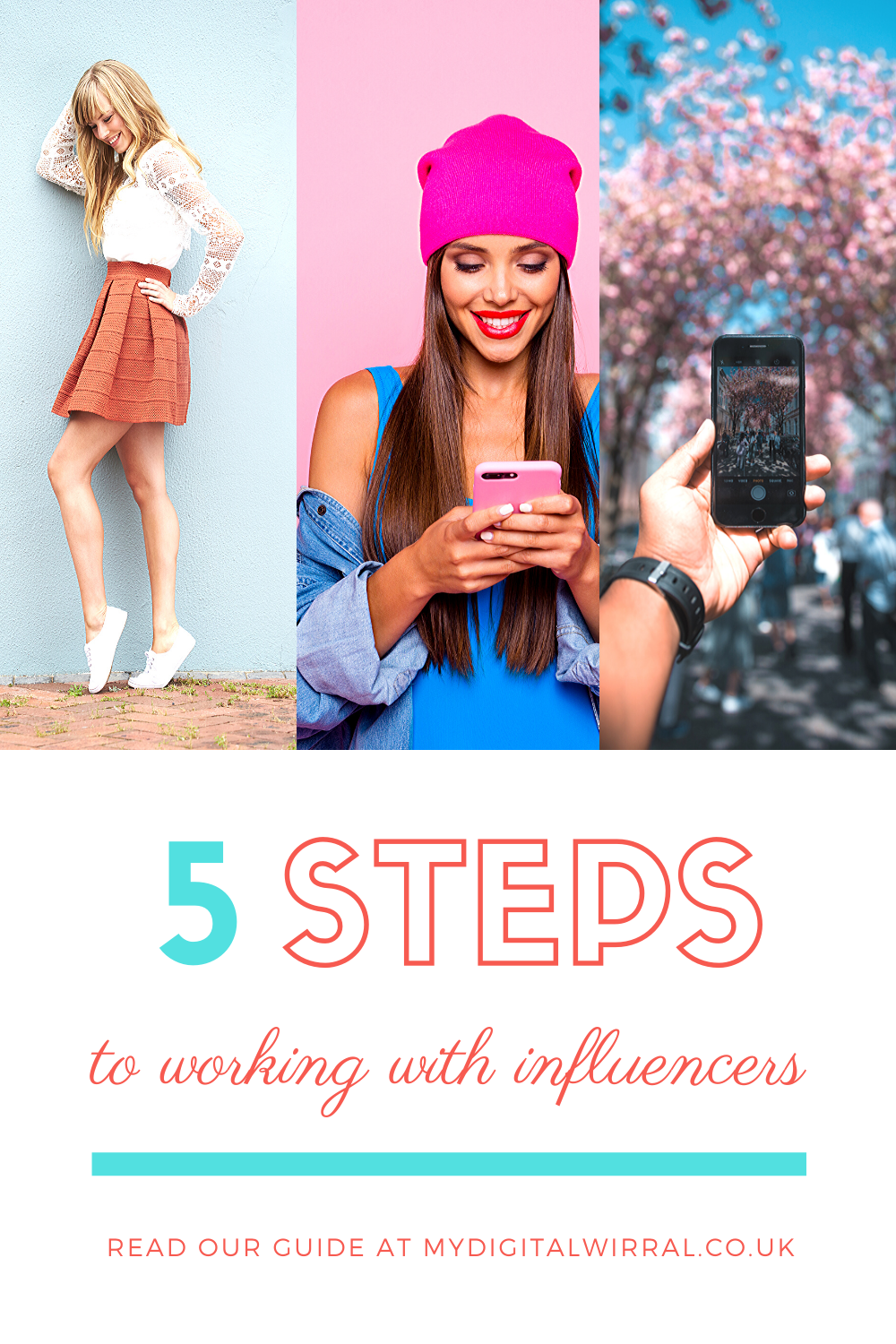How To Work With Influencers

If you’ve even had an inkling to Google marketing these days, you’ll know it’s all about influencers. Bloggers, vloggers, Instagrammers, Tik-Tok celebrities and micro influencers. It’s enough to leave any small business owner baffled.
So where should you begin if you want to start influencer marketing? Well first, let me tell you why it’s important that you consider it as part of your strategy.
What is Influencer Marketing?
It used to be all about bloggers, but now many people who blogged have migrated to platforms like Instragram and YouTube, and are producing more visual content that keeps their fans hooked. With large fan bases, they hold a great captive audience for your brand, and if you do your research, you’ll find influencers who hold your exact target market.
Influencers can be expensive to work with if you’re aiming for the top, but there are plenty of influencers to choose from for every budget and niche topic.

Where To Begin
Starting up with influencer marketing can feel like reaching out to a local celebrity – just a bit intimidating! However, remember that brand collaborations are an influencer’s bread and butter, they’ll be more than happy to hear from you, just remember these key tips!
- Never ask an influencer to work for free or for exposure. Some will be happy to work in exchange for free products, but it tends to be smaller, start-up influencers who will do this.
- Some influencers will accept free products in exchange for a review, but be wary, they will be honest!
- Try to work with influencers that you actually follow and engage with, you need to have a good idea of their personality and community. Don’t spread the net far and wide, be targeted.
- Decide whether you should work with local influencers or national ones initially. A local influencer with 5000 followers may be able to generate more targeted sales for you than a national influencer with 100,000 followers.
We know we said no one works for free, but if you’re feeling chancy, some vloggers do have a PO box that you can send your products to. This usually only works if your product would make good content, and there is no guarantee that the influencer will mention your brand at all. You may even get a bad review, so use this method with extreme caution!
Step One – Do Your Research
First thing’s first, decide which social media platform your target market is on. Influencer marketing might not be right for every business, but it might surprise you; there are even business influencers on LinkedIn.
Once you’ve honed in, use your business social accounts to follow plenty of influencers and make some notes on your initial favourites. Don’t be put off by smaller followings, check how engaged their audience is instead. See if they’ve done other collaborations in the past and see if you can see the results – did anyone mention the brand in the comments?
If you’re looking on Youtube watch their latest videos and their most viewed videos, Google them too and check they haven’t had any negative press in the past.
Step Two – Get Networking
Use your social account to comment, like and generally interact with your favourite influencers, you’ll start to be known in their mind and it will give you a better bargaining position. You might even learn something about the influencer you can use to create the perfect collaboration opportunity.
Not only that, some influencers get hundreds of emails a day – it can be hard to stand out! If you personalise your outreach email with comments like “I saw your latest opinion on X and thought maybe you would be interested in…” or “I know how much you love X so I wondered if you might like…”, you’re going to come off as more memorable and personable.
You might even find the influencer has already reviewed a competitor and isn’t a fan, or that they’re running a series covering a topic close to your business soon.
Step Three – Set a Budget, a Contract and Clear Terms
I remember my first influencer marketing mistake – I had just sent one of my favourite Instagrammers a dress from my boutique. She took some fantastic photos and tagged me, but she also tagged the brand that I bought the dresses wholesale from. This might seem great at first, but actually a lot of the exposure I paid for was going straight to the bigger brand, rather than to my small boutique. Combat this sort of thing by being clear from the start with how you want your item promoted.
You can certainly dictate things you don’t want an influencer to say if you’re paying for the exposure, but bear in mind most operate an ethical policy, and if you get too strict your plans might backfire and result in negative publicity. Honest reviews sell better than those that sound overly fake anyway, and might offer some valuable insight for your product development.
Make sure you’re both clear on budget and sign a contract to indicate this too, especially important if you’re planning on working together long term. You can even set a clause to break the contract if the results you expected aren’t met.
Many influencers will have a media kit available that details results of past campaigns, so make sure you ask for this.

Step Four – Interact and Engage With the Campaign
When your campaign goes live, be on hand to answer any questions the influencer’s fan’s might have. Stick around in the comments sections and be useful, offer links, sizing advice, product specifications and more, but never respond to trolls!
If there is criticism of your brand, reply professionally if you feel you need to, but avoid causing any aggro in the influencer’s comments section, this may make them avoid working with you again.
Step Five – Measure Those Results!
The golden rule is not to measure your campaign on likes on the influencer’s piece of content. An Instagram post you’ve collaborated on may get 10,000 likes, but you can’t be sure people aren’t just liking the post because they’re a fan of the account. At the end of the day, you’re here for ROI.
There are a few ways you can measure results from an influencer marketing campaign, try these:
Offer an Exclusive Discount Code
For places like Youtube and Instagram where you can’t always place a clickable link right in the content, you can instead offer a discount code. It won’t give you the full picture, but you’ll be able to track an influencers… influence? by seeing how many of your site visitors utilise that particular discount code. This can also be set up to track multiple campaigns – set up a unique code for each influencer you work with and you’ll be able to see who just gets likes, and who actually gets results.
Set Up a Tracking Link
This is easy to do with link shorteners like Bit.Ly, but if you’re going to really track results get a dedicated Google analytics tracking code and integrate that into your shortened link. You can set these up to track exactly where the traffic came from and from which influencer – there are plenty of tutorials on YouTube.
Set Up an Affiliates Scheme
If an influencer is just being paid on exposure and clicks they’re not necessarily results driven, however, if they earn a commission on every sale there’s a lot more reason to push your product and rave about it. There are plenty of plugins and services online that will let you set up affiliate marketing schemes, so you can reward the influencers with the best results, not just the best following.
And Don’t Forget!
Working with influencers is just one stage of the marketing funnel, make sure you make those links go to a killer landing page where you can capture leads, share curated products related to the campaign and offer other incentives to turn new customers into loyal returning customers.
Convinced influencer marketing is right for your brand? Keep checking back as we’re working on a North-West guide to local influencers!




